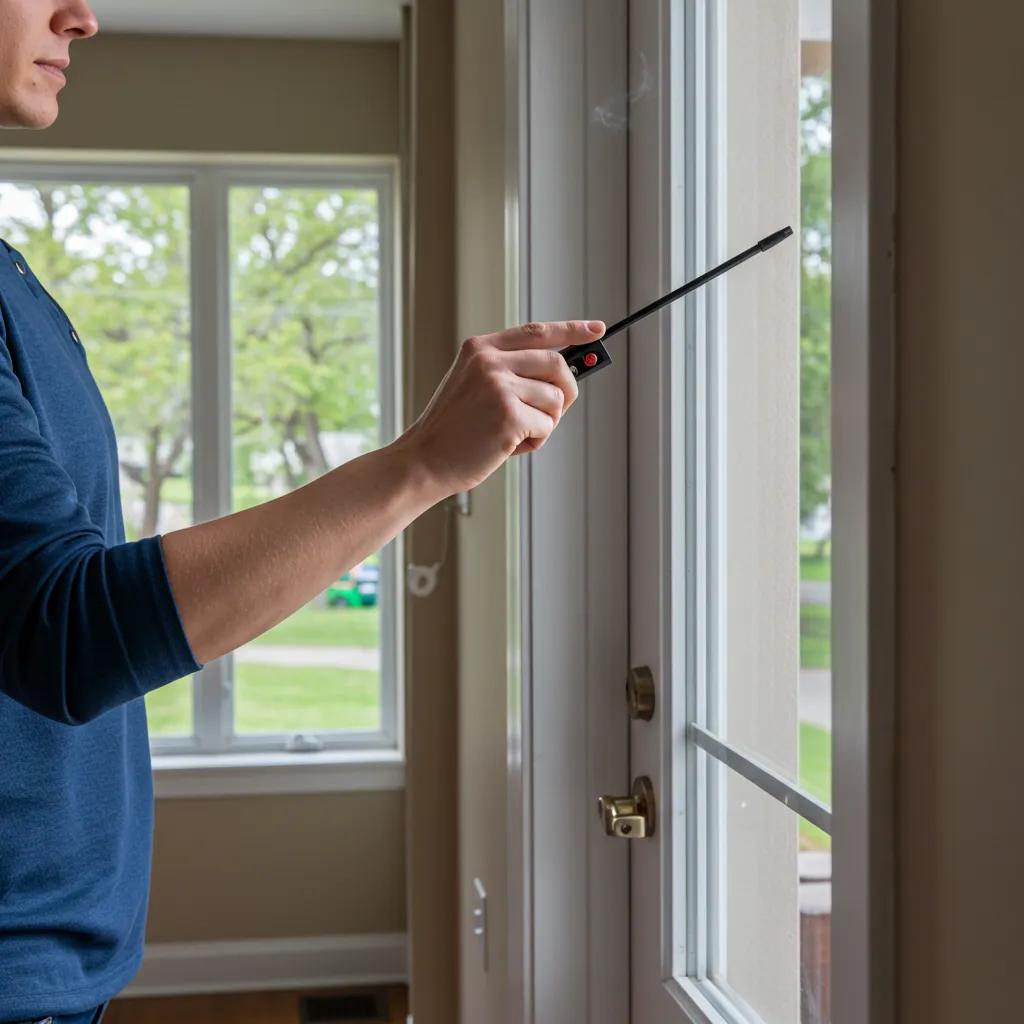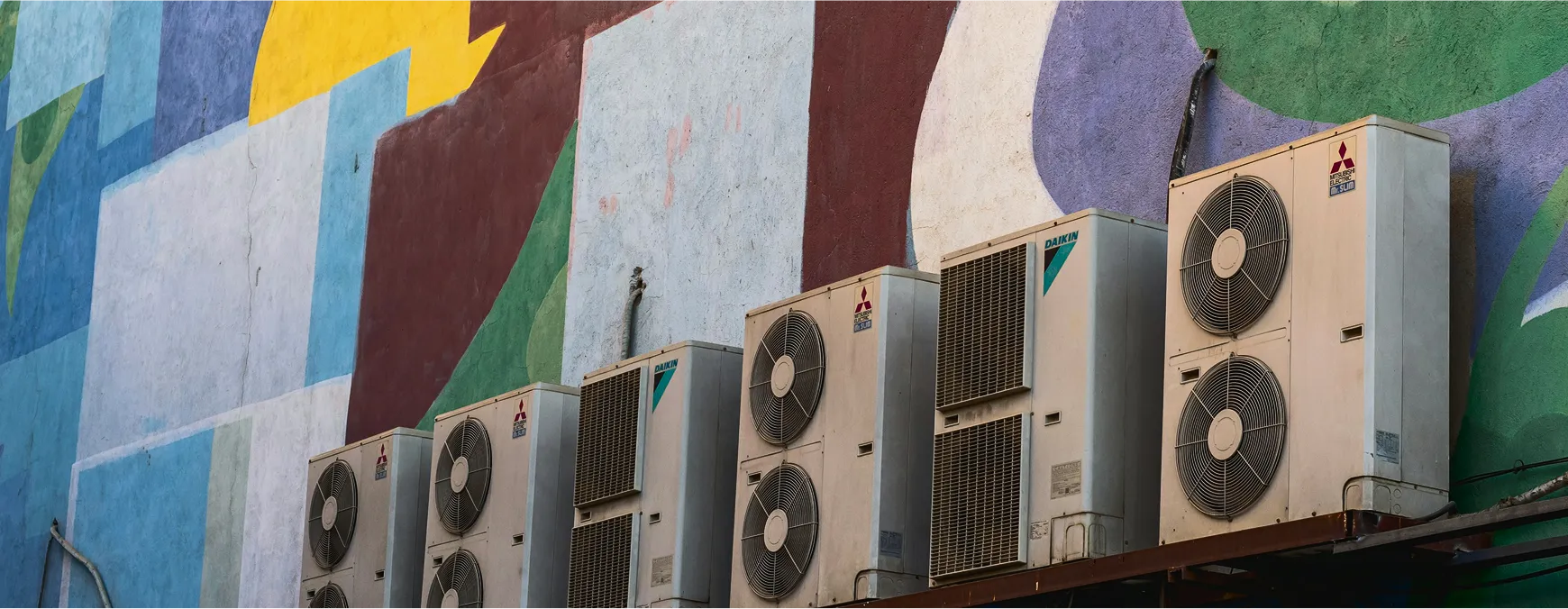
Seal Up Your Home: Smart Ways to Stop Air Leaks and Boost Energy Savings
Air leaks are those sneaky gaps in your home's protective shell that let your hard-earned conditioned air escape and unwelcome outside air sneak in Sealing them up is one of the smartest moves you can make to cut down on wasted energy and make your home feel way more comfortable This guide will walk you through how to spot these leaks with simple DIY tricks and professional checks, show you the best materials and methods for common gaps, and help you decide if tackling it yourself or calling in the pros is the right move for your place You'll learn easy tests like the hand test and smoke test, get the lowdown on diagnostic tools like blower door tests and thermal imaging, and find clear advice on when to focus on sealing your attic, ducts, or windows We'll also cover how to keep your seals working their best and the real-world benefits you'll see, like lower energy bills and fresher indoor air Throughout, we've woven in keywords like 'air leak detection,' 'seal air leaks,' 'blower door test,' 'weatherstripping doors and windows,' and 'duct sealing' to help homeowners and local pros in Northeast Houston take action.
What Exactly Are Air Leaks and Why Bother Sealing Them?
Air leaks are basically unintended openings in your home's structure that let air flow freely between the inside and outside Sealing them up is key to reducing heat transfer and taking the strain off your HVAC system When outside air sneaks in through cracks and openings, your heating and cooling system has to work overtime to keep your home at the temperature you want, which means more energy use and less comfort Sealing these leaks makes your home more energy-efficient, stops those annoying drafts, and helps keep your indoor humidity and air quality in check, directly benefiting your comfort and your wallet Knowing what causes them and where they usually hide helps you prioritize repairs and figure out if a simple fix or a professional job is needed, so let's dive into the causes and impacts next.
What's Causing Air Leaks in Homes?
Air leaks typically pop up around windows and doors, through unsealed openings for pipes and wires, and at connections in your attic or basement that compromise your home's air barrier Old sealants, worn-out weatherstripping, and leaky ductwork are common culprits that worsen over time due to the house settling and general wear and tear, creating persistent pathways for air to escape Construction penetrations—like those for recessed lighting, plumbing vents, and electrical wiring—often bypass insulation and offer direct routes for air to move, increasing infiltration Understanding these physical causes leads us to how these leaks impact your energy use and comfort, which we'll explore next.
How Do Air Leaks Mess With Your Energy Efficiency and Comfort?
Air leaks crank up infiltration and exfiltration, forcing your HVAC system to condition more outside air and driving up energy consumption Studies show that properly sealing leaks can significantly cut down on your heating and cooling needs Beyond energy costs, leaks create uneven temperatures, drafts, and hot or cold spots that make your home uncomfortable They can also cause your thermostat to short-cycle, putting extra wear and tear on your equipment Plus, leaks can let in outdoor pollutants and moisture, impacting your indoor air quality and potentially leading to condensation and mold Seeing these effects makes it clear why homeowners prioritize sealing their attics and ducts to boost system performance and extend its life.
Where Are the Usual Suspects for Air Leaks in Your Home?
You'll commonly find leaks in attic bypasses, attic hatches, rim joists, around windows and exterior doors, at duct penetrations and joints, and through small openings for electrical outlets and plumbing.
Attic transitions—where your conditioned living space meets the unconditioned attic—are particularly prone to leaks and often offer the biggest savings when sealed Windows and doors usually benefit most from caulking and weatherstripping Ductwork with poor seals or loose connections can leak conditioned air directly into your attic or crawlspace, draining your HVAC system's efficiency and your comfort A quick rundown of these spots can help you prioritize your inspections, leading us right into practical detection methods.
How Can You Pinpoint Air Leaks in Your Home?
Detecting air leaks involves a mix of simple DIY checks and professional diagnostics to find both the obvious and the hidden pathways Using the right method helps you prioritize your repairs effectively DIY techniques like the hand test, incense or smoke tests, and visual inspections are great for spotting obvious drafts and failing seals Professional options, such as blower door testing and thermal imaging, can quantify leakage and pinpoint problems hidden behind your walls A smart detection strategy starts with quick home checks and moves to professional diagnostics if the sources aren't clear or if you're looking for a full energy audit Let's break down DIY methods, when to call the pros, and how professional detection boosts accuracy.
What Are Some Easy DIY Ways to Find Air Leaks?
Simple DIY tests use basic tools and a keen eye to reveal many common leaks Feel for drafts around windows and doors, run your hand along baseboards and trim while your HVAC system is running, and use incense or a smoke pencil to watch for air movement To check for leaks on the outside, run a garden hose around suspect areas on a windy day or use a flashlight at night to spot light shining through gaps These methods are low-cost and safe for a quick initial assessment While DIY checks have their limits in accuracy and can't measure your whole house's leakage, they're excellent for deciding where to start with caulking or weatherstripping After your DIY checks, you can decide if a professional blower door test or thermal imaging would provide the definitive diagnosis we'll discuss next.
Before we jump into professional methods, let's compare detection techniques and their pros and cons to help you choose the best path before bringing in the experts.
Detection MethodComplexity / Tools NeededAccuracy / Best ForHand/Feeling TestLow; no tools neededLow-Medium; quick for obvious draftsSmoke or Incense TestLow; incense or smoke pencilMedium; shows airflow direction at specific gapsBlower Door TestHigh; requires blower door equipment and a trained proHigh; measures whole-house leakage (ACH) and finds major leaksThermal ImagingMedium; needs an infrared cameraHigh for spotting hidden leaks and insulation gaps
When Should You Bring in Professional Air Leak Detection Services?
It's time to call in the pros when your DIY checks leave you guessing, your energy bills stay high despite simple fixes, you've recently completed major renovations, or your home has complex ductwork and multiple potential leak sources Professionals use blower door tests to measure your home's air changes per hour and thermal imaging to reveal leaks and insulation gaps hidden from view, giving you a clear baseline for targeted repairs If you need a solid estimate of your return on investment or an energy audit to guide bigger upgrades, professional diagnostics provide the data you need for cost-effective solutions Knowing the advantages of professional detection helps you weigh DIY repairs against hiring experts, and the next section explains how Goode Air's professional services boost accuracy.
How Does Goode Air's Professional Detection Make a Difference?
Goode Air Conditioning & Heating, Inc uses professional diagnostics like blower door testing and thermal imaging to pinpoint exactly where leaks are and provides clear reports that prioritize the most effective repairs. Their local expertise in Northeast Houston means they understand how regional building practices and climate factors influence test results, leading to recommendations that fit local home types and humidity levels With straightforward reporting, you'll get a prioritized list of fixes targeting the biggest savings first Plus, Goode Air's same-day service availability and 100 percent satisfaction guarantee mean you can get urgent problems fixed quickly This precise diagnostic approach naturally leads into choosing the right materials and sealing methods, which is our next major topic.
What Are the Top Air Sealing Methods and Materials for Your Home?
Choosing the right sealing materials depends on the size of the gap, how much the joint moves, and whether it's exposed to moisture or UV rays Matching the material to the job ensures your airtightness lasts Small, stationary gaps under about 6 mm are best handled with caulk Moving parts need flexible weatherstripping For irregular or larger openings, expanding spray foam or mastic for ductwork is the way to go Picking the right material means less rework and longer-lasting results A comparison table below sums up typical materials, their best uses, durability, and cost-effectiveness to guide your selection After we cover materials, the following sections will offer application tips for caulking, weatherstripping, and using spray foam or mastic.
How Does Caulking Effectively Seal Small Drafts?
Caulking is a flexible sealant perfect for small, stationary gaps around window frames, trim, and minor openings When applied correctly, it bonds surfaces and blocks air movement Opt for silicone-based caulk for areas needing long-lasting water resistance and acrylic-latex for interior trim that you plan to paint Proper surface cleaning and allowing adequate cure time are key to good adhesion and durability Apply caulk in a continuous bead and tool it smooth for a complete seal Re-caulk if you notice any shrinkage or loss of adhesion to maintain airtightness Knowing how to use caulk properly sets you up to consider weatherstripping for movable components like doors and windows.
When and How Should You Use Weatherstripping for Doors and Windows?
Weatherstripping is designed for moving parts and should be chosen based on the type of motion Use compressible foam or V-strips for sash closures and door sweeps for gaps under doors. This flexibility ensures they seal airflow without hindering operation Installation involves measuring the gaps, selecting the right profile, preparing the surface, and fitting or adhering the strips so they compress evenly when closed Regular checks are important because weatherstripping can compress and wear out over time, so replacing it ensures it continues to perform effectively Proper weatherstripping reduces leaks at frequently used openings and complements more permanent solutions like caulking and insulation.
This introductory paragraph before the materials comparison table explains its purpose and how to use it when planning your repairs.
How to Maintain and Monitor Your Home After Air Sealing?
After sealing, a simple inspection schedule and regular maintenance will keep your seals working effectively and preserve the energy and comfort gains you've achieved Regularly check weatherstripping, caulk joints, and accessible duct connections, along with seasonal HVAC maintenance, to ensure seals remain intact and your system runs efficiently The checklist below outlines inspection frequency, maintenance tips, and how HVAC upkeep complements sealing to sustain long-term performance Following these practices maintains airtightness and prepares you for future inspections or upgrades.
These tips will help keep your seals and HVAC systems performing well after air sealing:
- Inspect seals and weatherstripping annually and after major weather events for any visible wear.
- Re-caulk or replace weatherstripping where adhesion has failed or compression is noticeable.
- Schedule regular HVAC tune-ups and filter changes to maintain balanced airflow and indoor air quality.
How Often Should You Check for New Air Leaks?
Inspect your seals at least once a year and after significant events like storms, renovations, or if you notice changes in comfort to catch new leaks before they become costly Seasonal checks—in the spring and fall—are practical because they happen before and after periods of high HVAC use and often reveal issues caused by temperature fluctuations Immediate re-inspection is recommended if your energy bills suddenly spike or if occupants report new drafts or uneven temperatures Regular inspections tie directly into maintenance actions and HVAC service routines to keep your earlier sealing work effective.
What Maintenance Tips Keep Your Seals Performing Well Long-Term?
Keep your seals effective by cleaning and inspecting sealant joints annually, re-caulking any cracks or areas with lost adhesion, and replacing weatherstripping once it shows signs of compression or material breakdown For spray foam and mastic, ensure any exposed foam is trimmed and covered, and that mastic remains intact on duct joints to prevent air bypass over time Maintain proper attic ventilation and insulation levels to reduce thermal stress on seals and prevent moisture buildup that can damage materials These proactive steps help protect your sealing investments and minimize the need for repeat interventions.
How Can Regular HVAC Maintenance Support Air Sealing Efforts?
Regular HVAC maintenance—including clean filters, inspected ductwork, and system tune-ups—preserves the balanced airflow achieved by sealing and prevents added stress on your equipment Clean ducts and properly sized filters reduce pressure imbalances that can expose leaks, while tune-ups ensure your system runs efficiently with the new, lower infiltration load Combining air sealing with scheduled HVAC service maximizes energy savings and extends the lifespan of your mechanical components, making integrated maintenance a cost-effective long-term strategy This combined approach naturally leads homeowners to consider local providers for these services.
Why Choose Goode Air Conditioning & Heating for Air Sealing in Northeast Houston?
Goode Air Conditioning & Heating, Inc is your local HVAC provider offering complete home comfort solutions that blend accurate diagnostics with practical sealing and HVAC services throughout Northeast Houston and Humble, TX. Their services cover air conditioning, heating, indoor air quality, heat pump services, and duct cleaning, allowing air sealing to be part of a coordinated plan for improved comfort and efficiency Goode Air is committed to transparent pricing and backs their work with a 100 percent satisfaction guarantee, while their 24/7 answering service and same-day service availability mean they can quickly address urgent comfort issues The following subsections detail what makes their service stand out, how they ensure transparency, and how you can schedule an assessment.
What Makes Goode Air’s Air Sealing Services Stand Out?
Goode Air's local focus means their recommendations are informed by the regional climate and construction methods common in Northeast Houston, making their sealing solutions more relevant and longer-lasting Their comprehensive approach integrates sealing with related services—like duct cleaning, HVAC repairs, and indoor air quality work—so you get solutions that address the root causes, not just the symptoms The company emphasizes a customer-first approach with open communication, prioritized repairs, and follow-up service to ensure your satisfaction and durable results These qualities help you make confident decisions when balancing DIY efforts with professional interventions.
How Does Goode Air Ensure Clear Pricing and Customer Satisfaction?
Goode Air prioritizes clear, upfront pricing and a 100 percent satisfaction guarantee to give homeowners predictable results and peace of mind Their commitment to transparent proposals means you'll receive prioritized recommendations backed by diagnostic context—like blower door readings or thermal imaging findings—so you can evaluate the cost-effectiveness Combined with same-day service capabilities and 24/7 answering support, these customer-focused policies ensure a responsive and reliable service experience Clear expectations and guarantees make it easier to decide when professional sealing is the right choice for your home.
How Can You Schedule an Air Sealing Assessment with Goode Air?
To schedule an assessment, contact Goode Air Conditioning & Heating, Inc through their website or Google Business Profile and request an air sealing evaluation tailored for Northeast Houston homes in Humble, TX The company offers diagnostic-driven assessments that may include blower door testing and thermal imaging as needed, and they can prioritize fixes to deliver the most impactful savings first With same-day service availability and 24/7 answering support, homeowners with urgent comfort issues can get timely help and clear next steps Scheduling a diagnostic assessment is the practical next step for homeowners who want a quantified plan to seal air leaks and boost their home's energy efficiency.
Ready for a More Comfortable, Efficient Home?
Sealing air leaks in your home is a powerful way to boost energy efficiency, cut down on utility bills, and enhance overall comfort by stabilizing indoor temperatures and improving air quality By combining smart DIY methods with professional services, you can effectively tackle both visible and hidden leaks for lasting results Understanding the benefits of air sealing empowers you to take concrete steps toward a more energy-efficient home. Contact Goode Air Conditioning & Heating today to schedule your air sealing assessment and start enjoying the advantages of a well-sealed home.
Call or text (281) 446-6719 today for fast, reliable service—Goode Air Conditioning & Heating, Inc. is here to keep your home comfortable and worry-free.

Customer Testimonials
See why so many homeowners trust Goode Air Conditioning & Heating, Inc.—our 4.8-star Google rating and hundreds of happy customers speak to the quality, care, and service we deliver every day.


